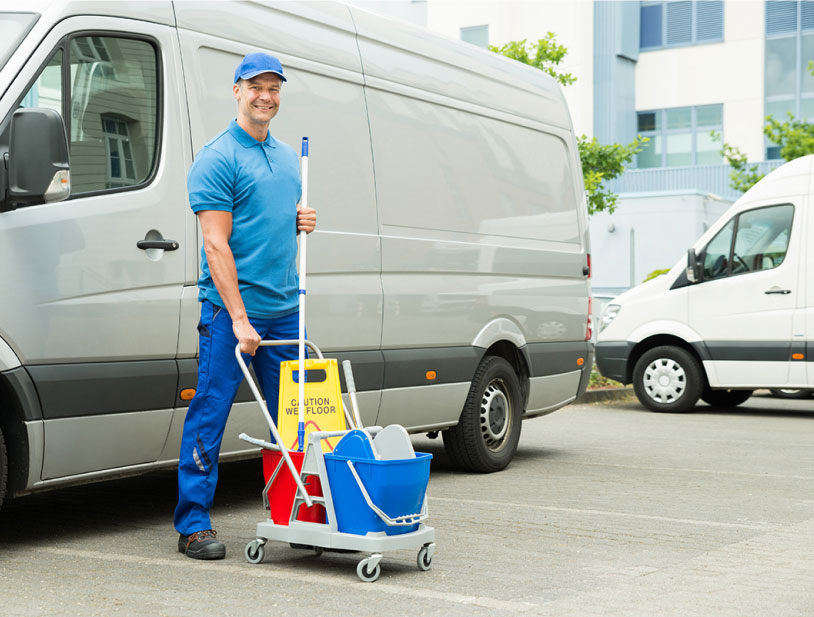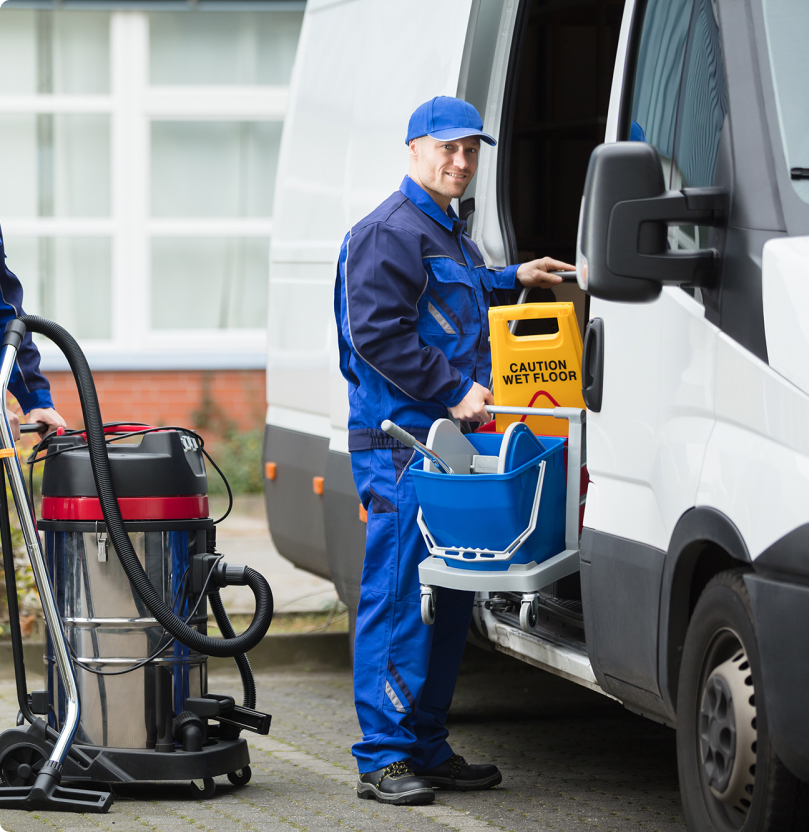- A DUI in the past 5 years
- 2 At Fault Accidents in the last 5 years
- 1 Serious motor vehicle violation in the past 3 years
- 1 At Fault Accident plus 1 serious motor vehicle violation in past 5 years
Auto

Every year the cleaning industry faces a pile up of auto insurance claims. It is one of the most common claims in the cleaning industry. From fleets of business owned vehicles to employee-owned cars, the cleaning industry utilizes this important insurance coverage daily. States vary on what limits and coverages are required but each cleaning business owner should understand how the coverage protects and assists their cleaning business venture.
Contact Our ExpertsIf you cause an accident, the liability portion of your auto policy pays for the injuries of the other person(s) and the damage to their vehicle or property. Liability in an auto accident is determined by fault. The policy of the person or business at fault is the one that pays for the damages to the other party.
It becomes a little bit more complicated when a person is driving their personal vehicle for work purposes. If you cause an accident while driving a personal vehicle for business purposes, the business can be held responsible for the damages. The business needs auto liability insurance coverage to protect themselves in this all-too-common scenario.
There are 2 ways for a business to purchase Auto Liability coverage.
- If the business has vehicles that are registered to the business, they can purchase a Commercial Auto Policy that covers the vehicles, the drivers of those vehicles, and the business. A Commercial Auto Policy provides liability coverage as well as Comprehensive and Collision coverage, and Medical Payments or PIP coverage (depending on your state).
- If the business does not own any vehicles, Auto Liability coverage can be added to your Business Owner’s Policy. The coverage is called Hired and Non-Owned Auto Liability. “Hired” refers to vehicles rented for business purposes. “Non-Owned” refers to vehicles not owned by the business but being used for business purposes, usually by the business owner or an employee. This is liability coverage only. It only covers injuries or damages caused to a 3rd party.
** Please note: This coverage protects the business. If the business is held liable (responsible) for the accident, this is the coverage that responds on behalf of the business. The driver also needs to have their own personal auto policy. Their personal car insurance may also need to pay damages in certain circumstances. And any damages to the employee’s vehicle are handled by their personal auto policy.
The Comprehensive and Collision coverage of your policy pays for damage to your own vehicle. Liability coverage pays for damages to someone else’s vehicle if you are at fault for the accident.
The Medical Payments or Personal Injury Protection (PIP) coverage on your policy pays for your injuries. Liability coverage pays for injuries to someone else if you are at fault for the accident.
Without Auto Liability coverage, your business could have to pay for injuries and damages out-of-pocket. Car accident injuries can be extremely expensive over time as they often involve injury to the neck and back. Did you know that cleaning businesses have more auto liability claims than any other type of claim? This is a surprising statistic, but it holds true across all states and all types of cleaning businesses.
f you hire employees who will be driving on behalf of your business, it is very important that you request a copy of their Motor Vehicle Report (MVR) at time of hire and then continue to request it annually. As the business owner, you have the right to know the driving history of an employee driving on your behalf. You can make hiring decisions based on that information.
When reviewing an MVR, it is strongly suggested that you avoid hiring an individual with:
- A DUI in the past 5 years
- 2 At Fault Accidents in the last 5 years
- 1 Serious motor vehicle violation in the past 3 years
- 1 At Fault Accident plus 1 serious motor vehicle violation in past 5 years
This is a hidden risk of having employees driving on behalf of your business. But it is possible to reduce the risk of financial damage to your business by:
- Requesting MVR’s from new employees before hiring
- Requesting MVR’s annually from all employees
- Requiring a driver safety course for all employees – there are many courses available online
- Requiring all drivers to provide you annually with proof of their personal auto insurance coverage
- Purchasing Auto Liability coverage for your business so that you are protected from large financial risk
When reviewing an MVR, it is strongly suggested that you avoid hiring an individual with:
This is a hidden risk of having employees driving on behalf of your business. But it is possible to reduce the risk of financial damage to your business by:
- Requesting MVR’s from new employees before hiring
- Requesting MVR’s annually from all employees
- Requiring a driver safety course for all employees – there are many courses available online
- Requiring all drivers to provide you annually with proof of their personal auto insurance coverage
- Purchasing Auto Liability coverage for your business so that you are protected from large financial risk

Can you give me an example
of an auto liability claim?
Example 1:
An employee drives their own car to a client’s home. When they finish cleaning they back out of the driveway and run over the client’s mailbox. That is an auto liability claim because the employee damaged someone else’s property with their vehicle. This type of claim would be covered by the Non-Owned Auto Liability portion of your policy. The vehicle that caused the damage is “not owned” by your company, but your company is responsible for the actions of the driver since they were driving for business purposes.
Example 2:
An employee drives their own car to a client’s home. When they finish cleaning, they drive directly to the next client’s home. On the way, they cause an accident that damages another car and injures the other driver. The police and an ambulance are called. The police determine that your employee is at fault for the accident. This is an auto liability claim with an injury and property damage to someone else. Since the employee was driving for business purposes, your business can be held responsible for this claim. Similar to the earlier example, this claim would be covered by the Non Owned Auto Liability portion of your business auto coverage.
